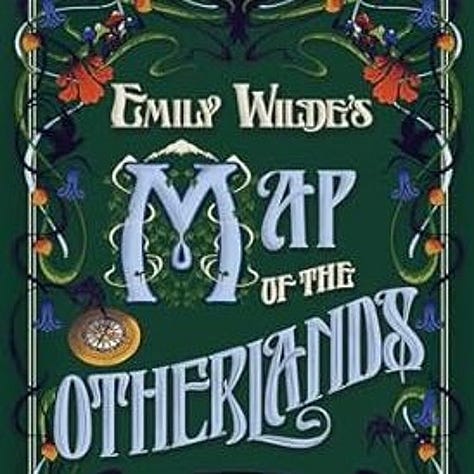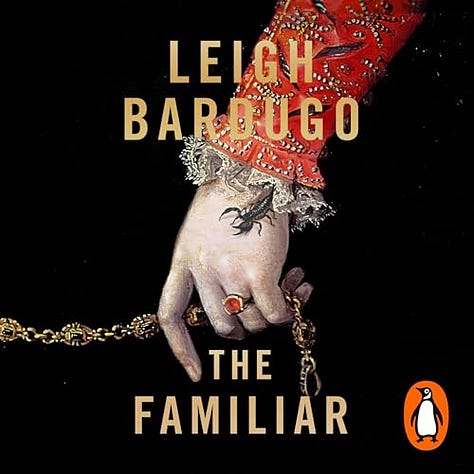Ayana Gray Newsletter: Summer 2024
In Which I Passionately Explain Why Publishing is Just One Big Formula One Race
Hello there!
If you’ve been a subscriber for a while, you likely know how I feel about summer. For me, it is truly the most wonderful time of the year. I love everything about it—the flowers in full bloom, the scorching heat, and idyllic trips to the beach (or the lake, if you’re a true Arkansan).
I’m departing from my normal M.O. for this newsletter to write about something I’ve wanted to write about for almost a year. I thought for a long time that it might be too niche or strange for an author newsletter, but the thought has—like many of my stories—continued to nag at me and demand to be written. So, I yield the floor to my imagination. (After all, doing so has served me well so far.)
I want to talk about the nature of publishing. And I want to talk about Formula One Racing. Actually, I want to talk about why I’m convinced that they’re ultimately the exact same thing. I’m a full-time author, and I’m also basically a world-class Formula One driver.
Stay with me, folks.
Many of you know—because I’m not shy about it—that I’m a massive fan of Formula One Racing. For the unbaptized, Formula One is considered “the highest class of international racing for open-wheel, single-seater formula racing cars.” (Thanks, Wikipedia!) Simply put, these are the fastest cars in the world. I became an F1 fan in 2017, after my now-spouse took me to the Australian Grand Prix in Melbourne while we were both living there. Looking back, my instant connection to the sport makes sense—I’ve always loved racing in all its forms. I love those tense few seconds before the shotgun blast, the sudden collective burst of speed and power, and the way one single moment can upset everything.
I remember the first time I drew a parallel between Formula One Racing and publishing. I was watching one of my favorite drivers, George Russell, at Sakhir in 2020. He started that particular race brilliantly. In fact, he was doing everything right, he was leading the race. Then, he went in for a standard pit stop to refresh his tires. In short, the pit crew messed up, and in seconds, he lost his shot at winning a grand prix for the first time in his career. He came in a humbling ninth place.
I still remember George’s post-race interview. I remember hearing a twenty-two-year-old’s voice crack, seeing the tears in his eyes as he tried to hold it all together on an international stage, despite a soul-crushing disappointment. In that moment, I really empathized with George, because truthfully I’ve felt the exact same way he did—like victory slipped right through my fingers, like I had to hold it all together and pretend everything was fine while a part of me withered from within.
What struck me about that race—and so many others I’ve watched—was a glaring, uncomfortable similarity. In both Formula One and publishing, authors and drivers can do everything right and still be derailed by the most minute technicality. In Formula One, those technicalities might look like a bad pit stop, a crash, or a bit of debris on the road that punctures a tire. In publishing, a technicality can look like a pandemic that forces you to cancel all of your events, the editor who bought your book deciding to move on to another publisher, or worst of all, a more famous author announcing an upcoming book that sounds eerily similar to the project you’ve been working on! All of these things are random, totally out of the author’s control, yet their consequences can be dire, and frankly heart-breaking.
Formula One drivers rely on their team. While they’re the face of it all, what enables them to do their jobs are the hundreds of engineers and technicians working behind the scenes. While authors don’t work with engineers, we do work with copy editors, digital marketing leads, art designers, publicists, and the like. Formula One has a team principal managing it all; authors have editors. Having a good team can catapult an author (or driver!) to stardom and success. Having a bad team (or, even a team that isn’t focused) can do the exact opposite.
Now, here’s where it gets spicy™. Every Formula One team has two drivers (and two cars) per team. You might immediately notice an inherent problem with this. If there’s only one race, and each team has two drivers, how do they balance giving both drivers equal resources, strategies, and attention?
Reader, they don’t.
Formula One teams play favorites all the time, sometimes, in painfully obvious ways. Another hitch? In Formula One, it’s not always the loyal veteran who gets to be the lead driver. Sometimes, it’s the young hotshot the team has just signed for a gazillion dollars that gets more attention and the better racing strategies. Sometimes, the team principal will literally instruct one driver to move aside for the other during a race so that they can leap frog ahead. (As you might imagine, this kind of order is rarely received well by the driver being asked to move).
While publishing is rarely as flagrant in choosing their favorites, we all know and understand that favorites exist. Publishers acquire multiple titles per year, and they don’t all get treated in the same way. “Lead titles” emerge from the fray, and it quickly becomes obvious who those authors are. Like in Formula One, these Lead Title Authors are not always the loyal veterans either. We’ve all seen the young, unproven authors get six-figure deals while the proven veteran gets pocket change. (Don’t believe me? Check out the #PublishingPaidMe Movement of 2020.) This cultivates a type of in-house rivalry, it brews resentment. It drives authors to do horrible, illogical things, like make fake GoodReads accounts to leave bad reviews on the works of other authors…
But, I digress.
This all brings me to a bigger point: publishing, like Formula One, is often a self-fulfilling prophecy machine. To the shock of absolutely no one, the top teams in Formula One are almost always the teams with the deepest pockets (ahem, Red Bull, Mercedes, McLaren, Ferrari). They often win the most races and have the most fans—because they have the money to make that happen! Meanwhile, teams with lower budgets can’t afford the state-of-the-art tech, they can’t make huge offers to recruit the best drivers, so they’re often left at the bottom of the pack, and they stay there.
…Does this sound familiar?
In the publishing community, we often know which books will be “big” from the moment they’re announced. We know because they’re the ones with big price tags attached, they’re the ones acquired by the publisher or editor with money to burn. Those authors are, at once, entreated to top-notch resources—great publicists, big media opportunities, tiered marketing plans, national book tours. When those authors hit the New York Times or Sunday Times bestseller lists, we’re rarely surprised because those books were set up to succeed. Sure, there are occasional outliers (in Formula One, there might be a crash that throws off everything; in publishing, a book might go randomly viral on BookTok), but those are the exceptions. The rules remain pretty fixed. The prophecy fulfills itself more times than it doesn’t.
There are other smaller parallels that come to mind. Formula One drivers and authors have seemingly simple jobs (Just write the books! Just drive the car!) but both are regularly expected to be public figures, which comes with a constant pressure to be on social media, and exposure to a barrage of unsolicited opinions from people who don’t always mean well. Success (and failure), are public spectacles in both spaces, and authors and drivers alike are expected to smile through it either way, which I can tell you is exhausting. (**Sometimes, I think about the time a reader came to one of my signings and told me everyone on Twitter thought my books were terrible. I smiled, thanked them for stopping by, then proceeded to sign for another hour while my heart thundered in my chest.**)
A note: Publishing and Formula One are also both billion-dollar entertainment industries that thrive on the illusion of glamour. We love to see the good-looking authors on Good Morning America like we love to see the good-looking Formula One drivers on private jets. One day, I will talk about pretty privilege and elitism in publishing, but, as Arya Stark tells the god of death in Game of Thrones,—“not today!”
Lastly, in a world rife with ageism, sexism, racism, (a lot of isms, y’all!) it’s not lost on me that the people who most often benefit in publishing and Formula One are rich and white. In both spaces, there have been strides made to be more diverse and inclusive, but those strides have mostly been performative (Note: Formula One isn’t championing their “We Race as One” diversity initiative publicly anymore, I notice…)
I know the tone of this essay/newsletter has been sort of bleak, so I’ll end on a bright note. Earlier, I told you about watching the moment George Russell lost his shot at winning his first grand prix. He may not have seen victory in 2020, but he did eventually get his win—in 2022, at the Brazilian Grand Prix. This past weekend, he won his second grand prix in Austria. The kicker? He won because the two drivers fighting for first place collided, effectively taking each other out and clearing a path for him to win. While I don’t ever want any author to succeed at the cost of another, George’s career is a nice reminder that, sometimes, patience is rewarded, and that while your dreams might not unfold when and they way you initially envisioned, that doesn’t mean they won’t happen at all.
In the end, all we can really do is keep driving. In the end, all we can really do is stay in the race.
This is effectively the end of my newsletter, but I do want to add a quick plug! In my last newsletter, I mentioned my new course with The Writer’s Conservatory. I’m pleased to share that the course is now online and available for anyone to purchase! You can take the course at your own pace, and of course if you think of questions, message me on Instagram, or Facebook. (It may take me some time to answer, but I do check my inboxes!)
What I’m Reading
I’ve slowed down a little mid-year, but I’m continuing to read when I can! Here are a few books I’ve really enjoyed, and they happen to be by authors who I think are talented writers as well as incredibly kind people.



Thank you all for indulging me! Look for my fall newsletter to get back to regularly-scheduled programming!
xo,
Ayana







